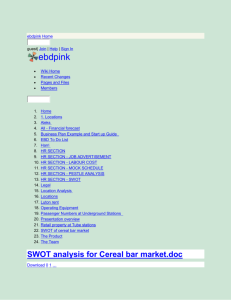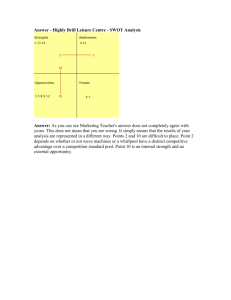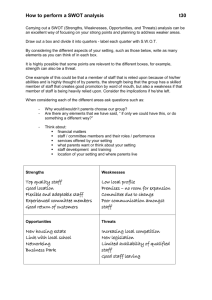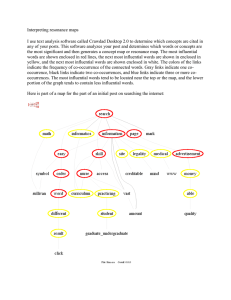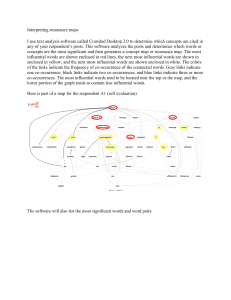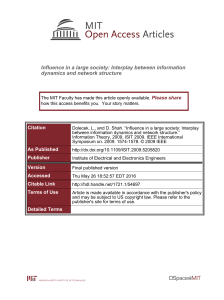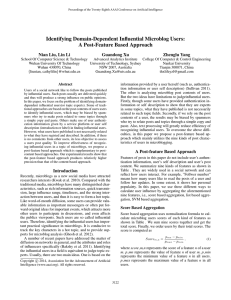SWOT analysis * V4 cooperation
advertisement
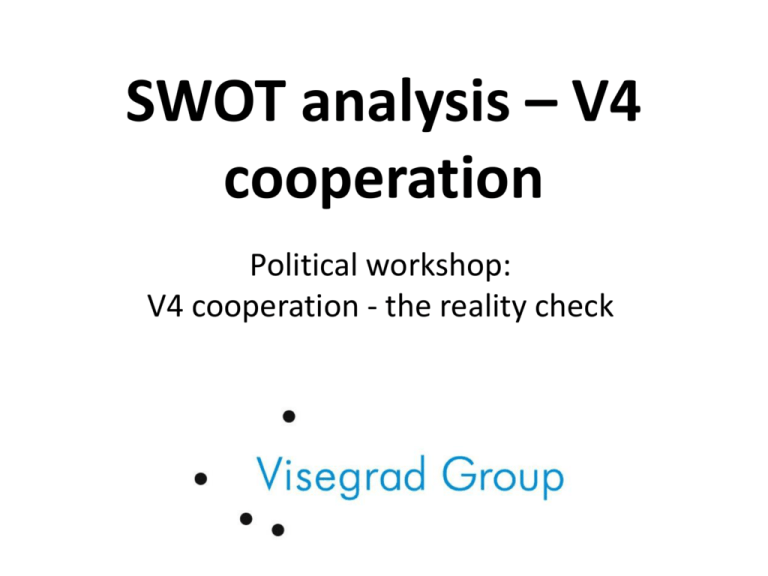
SWOT analysis – V4 cooperation Political workshop: V4 cooperation - the reality check SWOT analysis Strengths: common historical and cultural heritage, IVF, membership in international organizations (EU), geographical proximity Threats: multispeed EU, energy dependency from Russia (Russia behavior), no influence of the V4 on the EU level, shift of the investment flow from the central Europe elsewhere, insecure strategic environment, economic instability of the EU and eurozone, decreased weight of the EU on the global scale SWOT analysis Opportunities: Being recognized as a regional group by the EU, V4+ cooperation, Foreign direct investment, Energy security, Prevention of the “brain flow”, Supranational coordination authority within V4, Cooperation in the framework of the EU institutions, Tourism, Attraction of “brains” from outside, Building infrastructure Weaknesses: No common foreign policy, Non-recognition by the EU, Energy vulnerability, Unsettled historical issues, Lack of structure, Under developed infrastructural links between V4 countries, Too general rhetoric of political leaders in declarations, Enlargement (?), Lack of real regional political leaders with concrete will to cooperate Most important Common foreign policy Permanent institution in the V4 Diversification in the energy policy Improving transport infrastructure Environmental policy Defense spending EU regional policy reform Impossible “V4 brand” PR Possible Energy infrastructure (interconnectors) Global economic brand Less important Important stakeholders Less influential and most interested: NGOs, SMEs, think-tanks Most interested and most influential: Russia, Germany, governments, Ministry of Foreign Affairs, OSF, key companies Less influential and less interested: NATO, Committee of Regions, academics Less interested and most influential: international corporations, media, European Commission and European Council, banks

